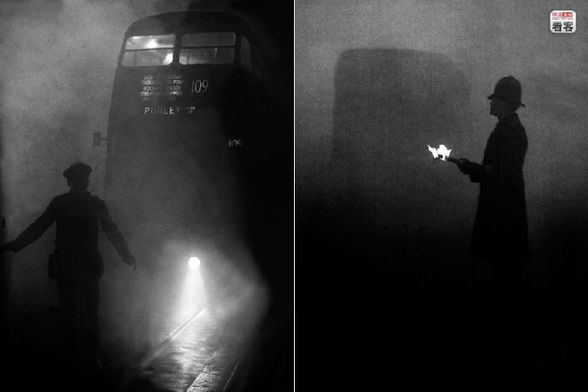London's Great Smog
Xinhua News Agency, February 26, 2013 Adjust font size:
 |
| People walk on the road in smoggy weather in London in 1952. [163.com] |
The great smog
By the time of the December 1952 smog by far the most commonly used fuel was still coal.
Coal for domestic fuel was of poor quality with a high sulphur content, with most of the high quality coals going for export to bolster Britain's shaky balance sheet which tottered near bankruptcy in the wake of the costs of the Second World War.
There were estimated to be 12 million homes burning coal for heating, and almost all of the country's 20,000 railway locomotives were steam powered.
In the center of London there were five power stations scattered along the length of the Thames, all of them in densely populated areas and all of them burning coal.
That December, warm air blew in from the Gulf Stream in the Atlantic and then halted over London. Beneath it was trapped cold air earlier drawn into the low-lying Thames Valley.
With the warm air holding the cold air in place it was only a matter of time for the smoke produced by the city to become trapped, and the stage was set for the grandest pea souper ever and a public health disaster that was to change attitudes to the environment and pollution.
Eye-witness Donald Acheson, a doctor at a hospital in the center of London at the time, recalled his memories of the Great Smog.
"Sufficient ambulances got to us to deliver patients to take up every available bed. The fog itself swirled into the wards, and seemed to consist principally of smuts, so that the wash basins and baths turned darker and darker grey, until it was possible literally to write one's name on them which I actually did," he said.
Acheson also remembered that the smog was so thick that he got lost in the street outside the hospital, an area he knew very well, and had to feel his way down the street along a wall until he could find a sign with the name of the road on it.
Sporting events across the entire region were cancelled. Cinemas were shut down, as well as theaters because the smog got indoors and audiences could not see performances clearly.
Trains ran on reduced timetables and almost all road transport stopped. Ambulances taking people affected by the smog to hospital had to be led there by people walking along the street in some cases.
First green legislation
Government reaction to the Great Smog was slow, but public concern and action by legislators eventually led to new laws.
The Clean Air Acts of 1956 and 1968 were introduced to deal with the smogs.
The Acts gave local authorities powers to control emissions of dark smoke, grit, dust and fumes from industrial premises and furnaces and to declare smoke control areas in which emissions of smoke from domestic properties were banned.
Since then, smoke control areas have been introduced in many large towns and cities across Britain.
The implementation of smoke control areas, the increased popularity of natural gas and the changes in the industrial and economic structure of the UK led to a substantial reduction in concentrations of smoke and associated levels of sulphur dioxide between the 1950s and the present day.
These Acts, together with other associated clean air legislation, were repealed and consolidated by the Clean Air Act in 1993 which provides the current legislative controls.

